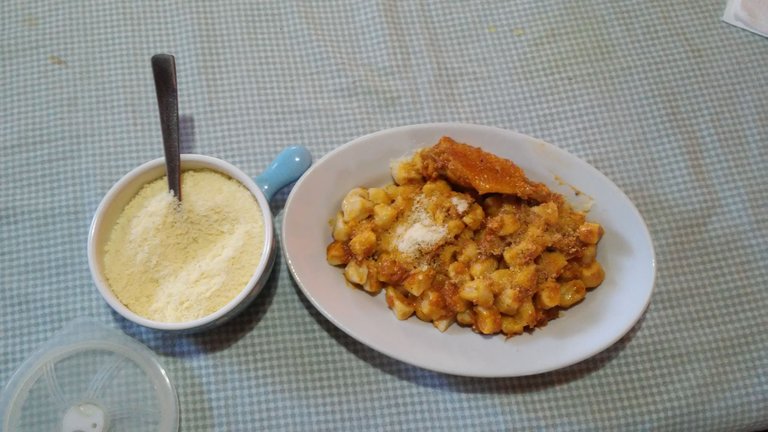[ENG/ESP] Stews and casseroles, hot and nutritious dishes to replenish energy during the winter season. / Estofados y guisos, platos calientes y nutritivos para reponer energías durante la estación invernal.
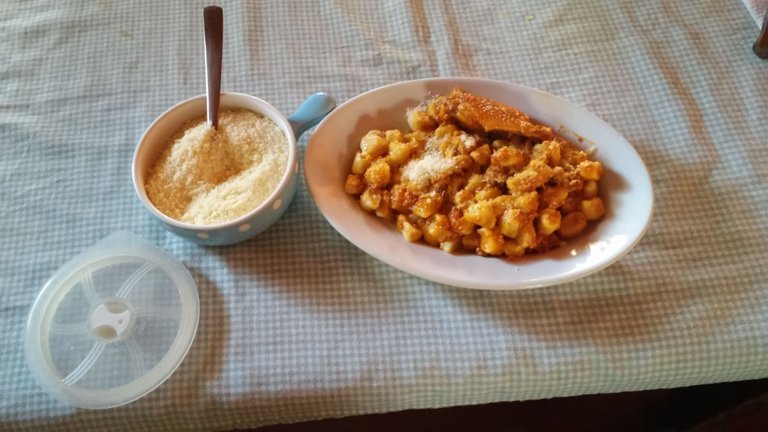
Winter and its low temperatures (in this part of the southern hemisphere) mean that we have to change our eating habits and switch suddenly to foods with a higher energy load. Especially hot dishes and ingredients with a strong caloric content.
On the one hand to protect and strengthen our body. But on the other hand also to replenish energy when we go out, for example, for a walk, a run or any other type of physical activity.

El invierno y sus bajas temperaturas (en esta parte del hemisferio austral) hace que tengamos que cambiar nuestros hábitos alimenticios y pasar de golpe a consumir alimentos con una carga energética mayor. Especialmente platos calientes y con ingredientes con un contenido calórico contundente.
Por un lado para proteger y reforzar nuestro organismo. Pero por otro lado también para reponer energías cuando salimos, por ejemplo, a hacer una caminata, a correr o a efectuar cualquier otro tipo de actividad física.
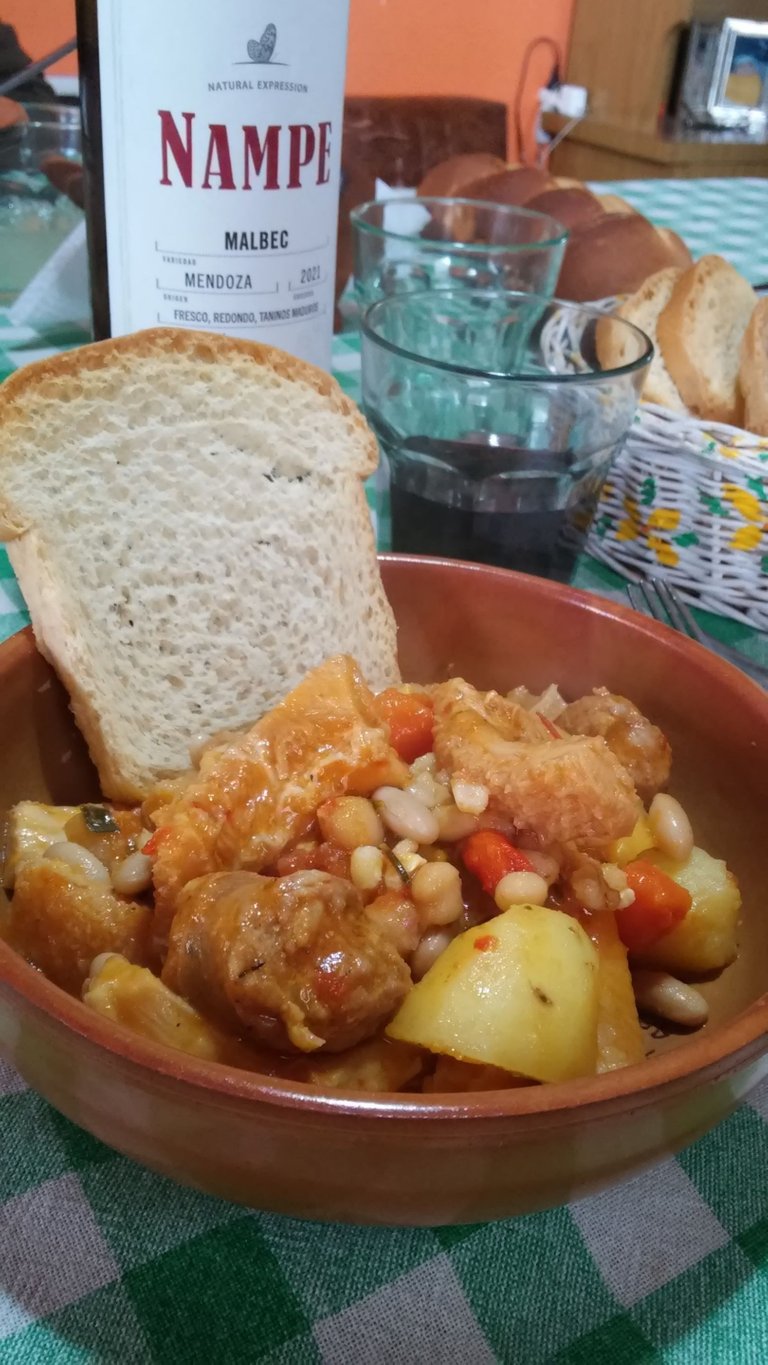
Stew, a typical winter food in Argentina, does not have a defined culinary meaning and can be prepared in different ways (in this case as you can see in the pictures with pork meat).
Generally speaking, it is a meal consisting of a semi-fatty mixture in which a food is cooked in some kind of broth or sauce, especially red.
Because its digestion is slow due to the fats, a certain rest is advised after having eaten it. This is the origin of the classic concept of "siesta" in my country. The classic short rest after meals. Although paradoxically the siesta is more common in summer when light meals are consumed than in winter when "heavier" meals with a much higher caloric and energetic power are consumed.

El guiso, una comida tipica de invierno en Argentina, no tiene una acepción culinaria definida y puede ser preparado de distintas maneras (en este caso como lo pueden ver en las imágenes con carne de cerdo).
En líneas generales se trata de una comida constituida por una mezcla semigrasa en la que se cocina un alimento en algún tipo de caldo o salsa, especialmente roja.
Debido a que su digestión es lenta por causa de las grasas, se aconseja un cierto reposo después de haberlo comida. De ahí nace el clásico concepto de "siesta" en mi país. El clásico descanso corto después de las comidas. Aunque paradojalmente la siesta es más habitual en verano cuando se consumen comidas livianas que en invierno cuando se consumen comidas más "pesadas" con un poder calórico y energético muy superior.
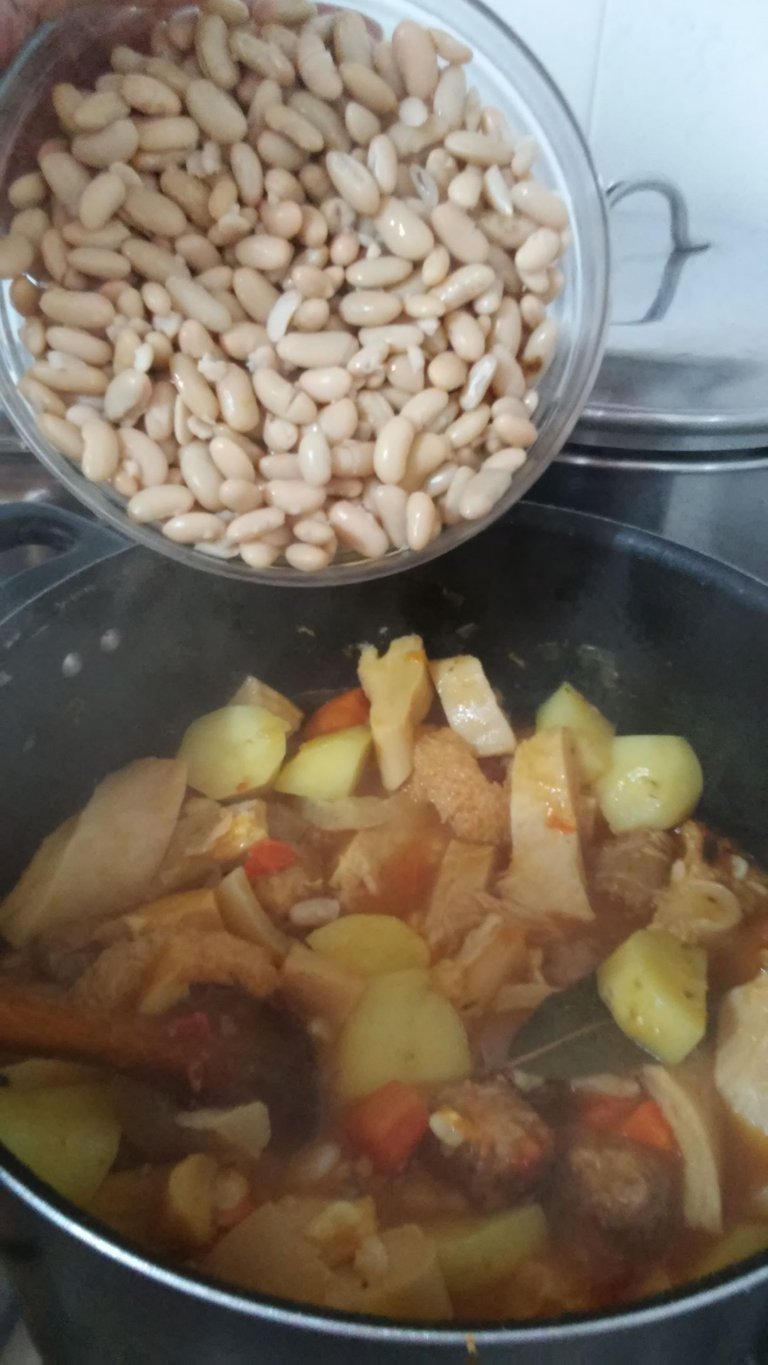
The stew is another typical winter meal in my country, but unlike the stew, it is cooked in a completely covered pot so that the meat absorbs all the aromas of the ingredients.
Both (stews and stews) are extremely nutritious due to the great amount of minerals and vitamins they contain, not only from the meat, which can be any type, although beef is preferred, but also from the vegetables.
On the other hand, this type of meals based on fish is not very common.

El estofado es otra de las comidas típicas de invierno en mi país, solo que a diferencia del guiso se cocina en una olla totalmente cubierta para que la carne absorba todos los aromas de los ingredientes.
Ambos (guisos y estofados) son sumamente nutritivos por la gran cantidad de minerales y vitaminas que contienen, no únicamente de la carne, que puede ser cualquier tipo, aunque se prefiere la vacuna, sino también de las verduras y de las hortalizas que lo integran.
En cambio tiene muy poca difusión este tipo de comidas a base de pescado.
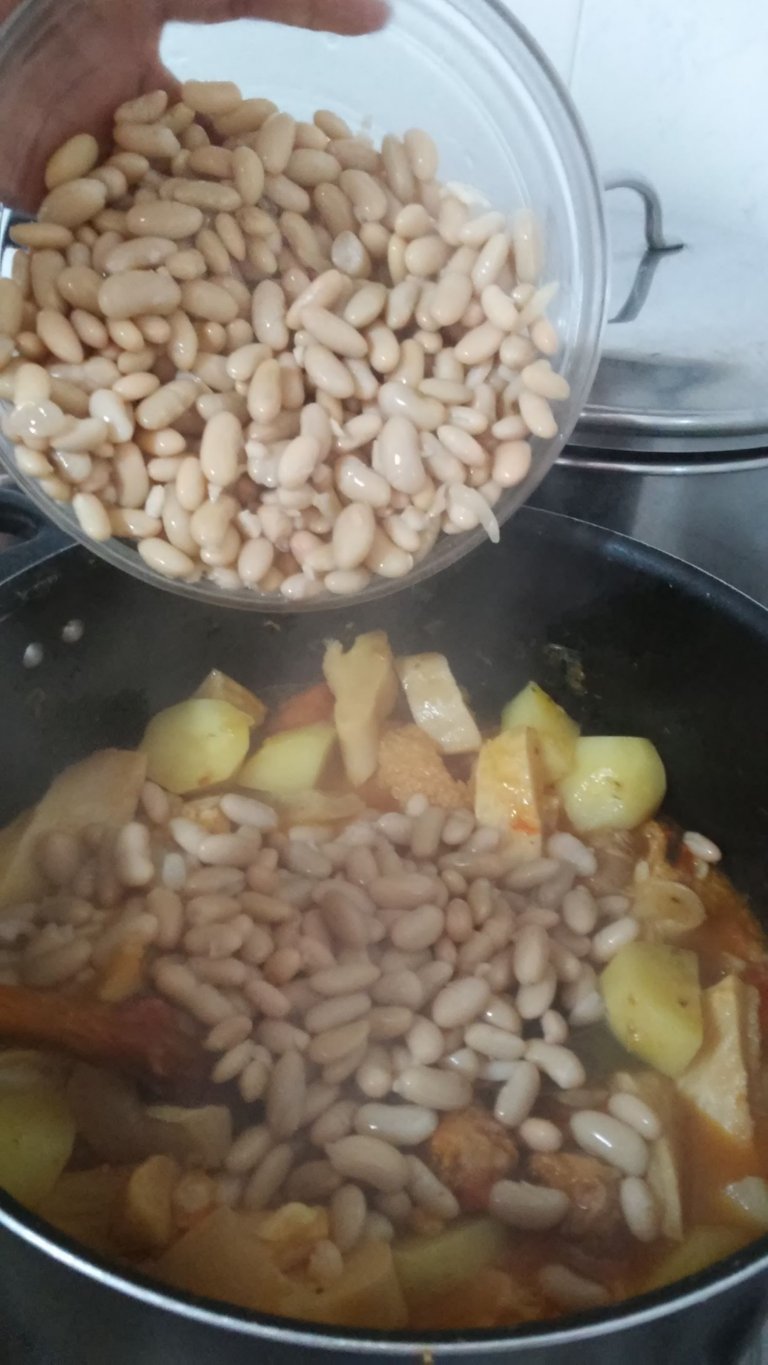
So far I have presented you traditional stews and casseroles. However, there is also a vegan variant.
In this case, meat and animal foods are substituted by their vegetable counterparts. It is a very tasty and healthy dish.
The spices that can be used in stews and vegan stews are ginger, turmeric and paprika that provide a delicious and different flavor. Textured soy can be used as a replacement for meat. Argentina is a major soybean producer and in the first decade of the 2000s was the world's leading producer of this crop.

Hasta hora les he presentado estofados y guisos tradicionales. Sin embargo existe también la variante vegana.
En este caso, la carne y alimentos de origen animal son substituidos por sus similares de origen vegetal. Es un plato muy rico y saludable.
Las especias que se pueden usar en guisos y estofados veganos son el jengibre, la cúrcuma y el pimentón que le proporcionan un sabor delicioso y diferente. En reemplazo de la carne se puede utilizar la soja texturizada. Argentina es un gran productor de soja y en la primera década del 2000 fue el primer productor mundial de este cultivo.
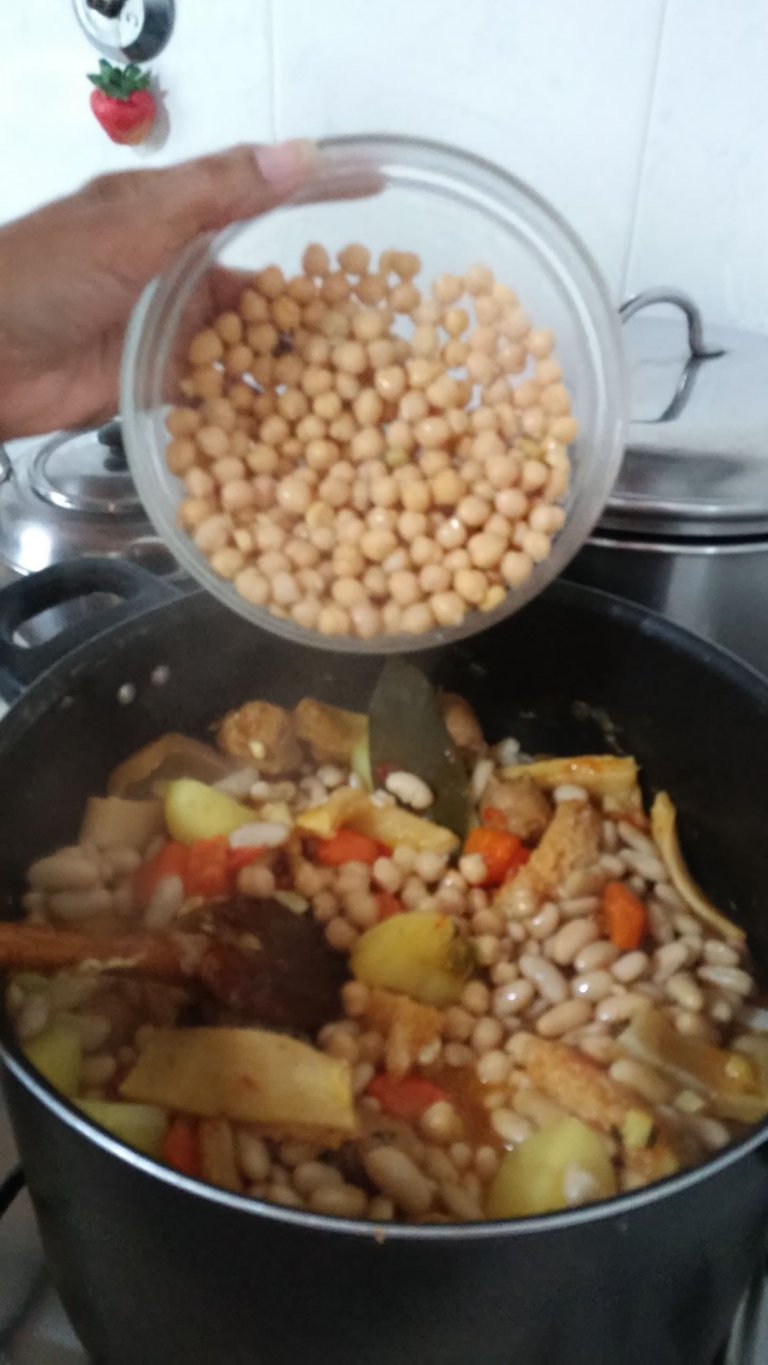
One of the characteristics of vegan stews is that they require significantly less cooking time, since vegetables are cooked in a much shorter time than meats.
The preparation is the fundamental base: it starts with a very well made stir-fry with finely chopped onion, you can add leeks or green onion, garlic and turn it in the pot covered for a couple of minutes with a wooden spoon. Then add the tomato sauce (crushed tomatoes, sauce itself or whole tomatoes of your choice, although I prefer crushed tomatoes or perita tomatoes, whole, since not all sauces are of good quality).
Add the vegetables and a little homemade broth (one or two small cups) and continue stirring with the spoon for a few minutes. It is good to always cook over low heat.

Una de las características que tienen los guisos o estofados veganos es que requieren un tiempo de cocción sensiblemente menor, ya que las verduras se cocinan en un tiempo mucho más breve que las carnes.
La preparación es la base fundamental: se parte de un sofrito muy bien hecho con cebolla finamente picada, se pueden agregar puerros o cebolla de verdeo, ajos y se hace girar en la olla tapada por un par de minutos con una cuchara de madera. Luego se agrega la salsa de tomates (tomates triturados, salsa propiamente dicha o tomates enteros a elección, aunque mis preferidos los tomates triturados o los tomates peritas, enteros, ya que no todas las salsas son de buena calidad).
Agregamos las verduras y un poco de caldo casero (una o dos tazas pequeñas) y seguimos girando con la cuchara por unos minutos. Es bueno cocinar siempre a fuego lento.
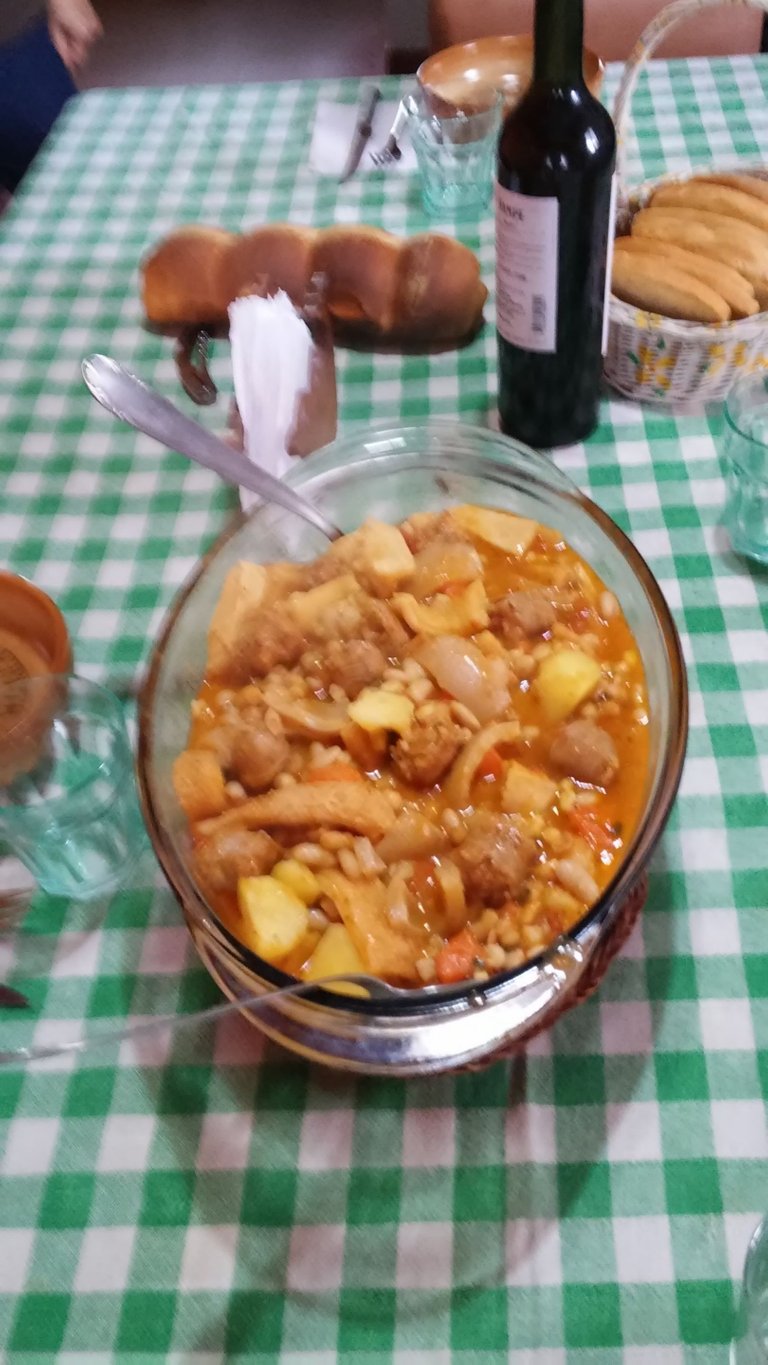
Then add the meat, spices and other ingredients, cover the pot and cook over low heat for 45 minutes to an hour, stirring from time to time to prevent the ingredients from sticking to the bottom of the pot.
I forgot to say that when we make the sofrito it is important to cover the bottom of the pot -do not exaggerate- with good quality oil.
Obviously if we make a vegan stew or stew, the last step of adding the meats is avoided and therefore the cooking time is shorter.

Agregamos luego la carne, especias y demás ingredientes, tapamos la olla y cocinamos siempre a fuego lento por espacio de 45 minutos-una hora, revolviendo de vez en cuando para evitar que los ingredientes se peguen en el fondo de la olla.
Olvide decir que cuando hacemos el sofrito es importante cubrir el fondo de la olla -no exagerar- con aceite de buena calidad.
Obviamente si hacemos un guiso o estofado vegano, el último paso de agregar las carnes es evitado y por lo tanto el periodo de cocción es inferior.

If we serve the stew in a terracotta casserole like the one you see in the pictures, the food stays warm for much longer.
This type of casserole is a souvenir of my years spent in Italy, where they are widely used in this type of meals.
They are truly ideal for stews, casseroles, soups and any other type of food that needs to keep its caloric power for the minutes that our food lasts.

Si servimos el guiso o estofado en una cazuela de terracota como la que ven en las imágenes, la comida se conserva caliente durante mucho más tiempo.
Este tipo de cazuelas son un recuerdo de mis años transcurridos en Italia, donde son muy usadas en este tipo de comidas.
Son verdaderamente ideales para guisos, estofados, sopas y todo otro tipo de comida que requiera conservar su poder calórico por los minutos que dure nuestra comida.
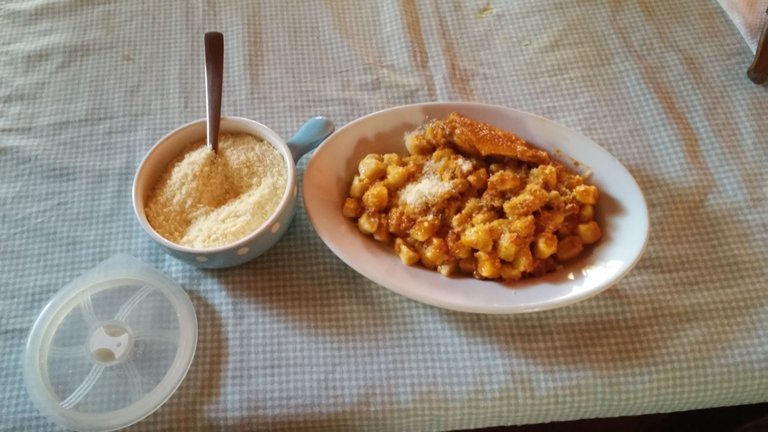
Another type of spice that we can add and that gives it a particular flavor are bay leaves, an aromatic plant that has no difficulty growing in any backyard.
Black pepper, coriander and parsley are other indispensable condiments in any good stew or stew that boasts as such.
In some gastronomic cultures, seaweed is often added. I have never done it. The only observation in this case is to hydrate them well before putting them in the pot because they increase considerably in volume (up to ten times their original.

Otro tipo de especie que le podemos agregar y que le da un sabor particular son las hojas de laurel, una planta aromática que no tiene dificultades en crecer en cualquier patio.
La pimienta negra, el cilantro y el perejil son otros condimentos indispensables en cualquier buen guiso o estofado que se precie como tal.
En algunas culturas gastronómicas se le suele agregar algas. Yo nunca lo he hecho. La única observación en este caso es hidratarlas bien antes de introducirlas en la olla porque aumentan considerablemente de volumen (hasta diez veces su volumen original)
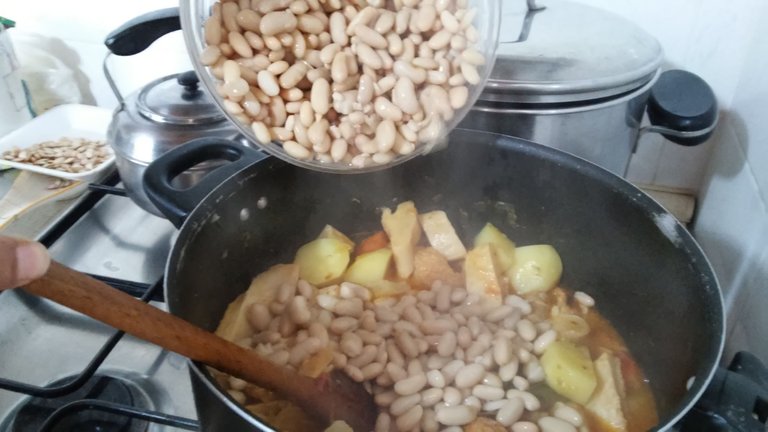
It is important to take into account the cooking time. Once the sofrito, the tomato sauce and the broth have found their right point and we add the vegetables, they should be cooked over low heat (the ideal is to put an iron disk between the direct fire of the stove and the bottom of the pot so that the heat is concentrated in a uniform way.
Vegetables generally have a cooking time of between 15-20 minutes, and it is a good practice to prick them with a fork to know if they are well cooked or if they are still missing a few minutes.
For example, carrots take the longest to cook, so potatoes should be added earlier.

Es importante tener en cuenta los tiempos de cocción. Una vez que el sofrito, la salsa de tomates y el caldo hayan encontrado su punto justo y le agregamos las verduras, estas deben ser cocinadas a fuego lento (lo ideal es poner un disco de hierro entre el fuego directo de la cocina y el fondo de la olla para que el calor se concentre en manera uniforme.
Las hortalizas en líneas generales tienen un tiempo de cocción de entre 15-20 minutos, y es una buena práctica pincharlas con un tenedor para saber si están bien cocidas o si todavía les faltan algunos minutos.
Por ejemplo la zanahoria es la que más tiempo tarda en cocinarse, por este motivo las patatas deben ser agregadas antes.
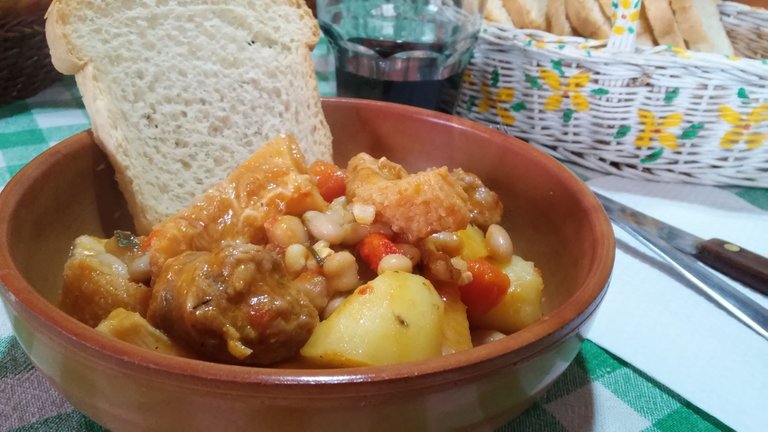
There are other vegetables that can be added towards the end of the stew, because they have a very short cooking time.
This is the case of Swiss chard, spinach, cabbage, kale, etc.
We could not add them at the beginning of the cooking because they would practically disintegrate, not being able to appreciate their true flavor.

Hay otras verduras que se pueden agregar hacia el final del guiso o estofado, porque tienen un periodo de cocción muy breve.
Es el caso de la acelga, la espinaca, el repollo, la col, etc.
No las podríamos agregar al inicio de la cocción porque prácticamente se desintegrarían, no pudiendo apreciar su verdadero sabor.
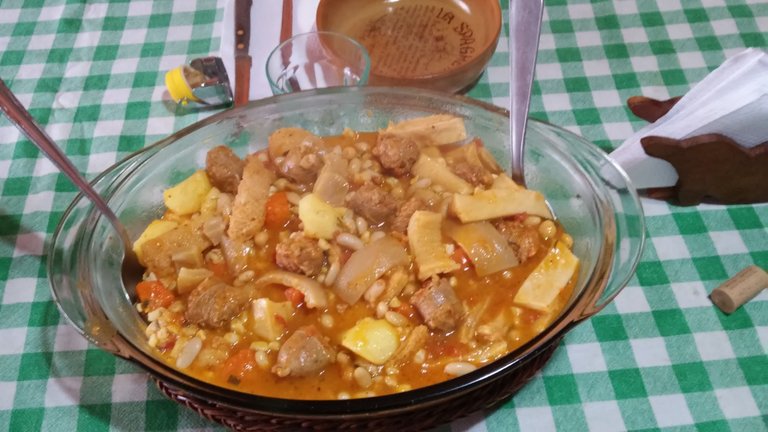
Another aspect that we can customize in stews and casseroles is the consistency, since some people like it thicker and others less.
It is convenient to start with the standard variant with enough liquid (broth) and then if we want to thicken it we only have to dissolve 1-2 tablespoons of whole wheat flour with half a cup of water and add them to the stew, stirring well until the whole content thickens.
It is a real delight to dip the bread slices in this dense sauce with all the flavors of the meats, vegetables and spices!

Otro aspecto que podemos personalizar en guisos y estofados es la consistencia, ya que a algunas personas les gusta más denso y a otras meno.
Es conveniente partir con la variante estándar con bastante líquido (caldo) y luego si queremos espesarlo solo tenemos que disolver 1-2 cucharadas de harina integral con media taza de agua y agregarlas al guiso-estofado, revolviendo bien hasta que todo el contenido se espese.
¡Es una verdadera delicia mojar las fetas de pan en esta salsa densa con todos los sabores de las carnes, las verduras y las especias!
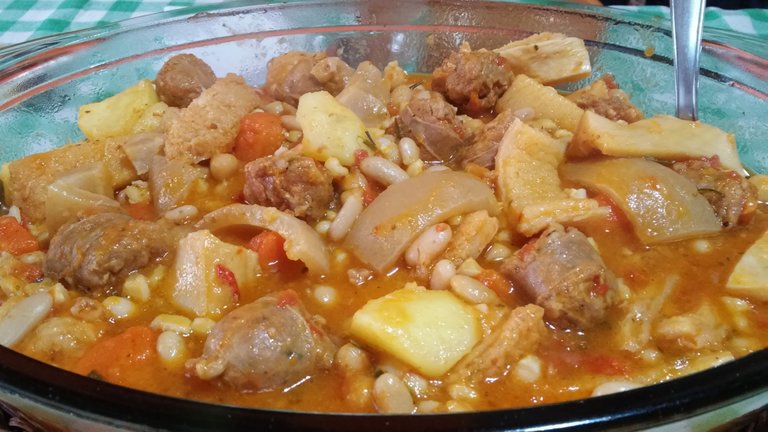
Being a real container of food substances, stews and/or casseroles acquire different flavors and characteristics, depending on how they are prepared.
It is not the same to make them with the pot uncovered than with the pot closed, or better yet, with the pressure cooker.
The concentrated foods with the rest of the flavors acquire a different nutritional power and digestibility in each case.

Siendo un verdadero contenedor de substancias alimenticias, los guisos y/o estofados adquieres sabores y características distintas, según sea como se preparen.
No es lo mismo hacerlos con la olla destapada que con la olla cerrada, o mejor aún, con la olla a presión.
Los alimentos concentrados con el resto de los sabores adquieren un poder nutritivo y una digestibilidad diversa en cada caso.
